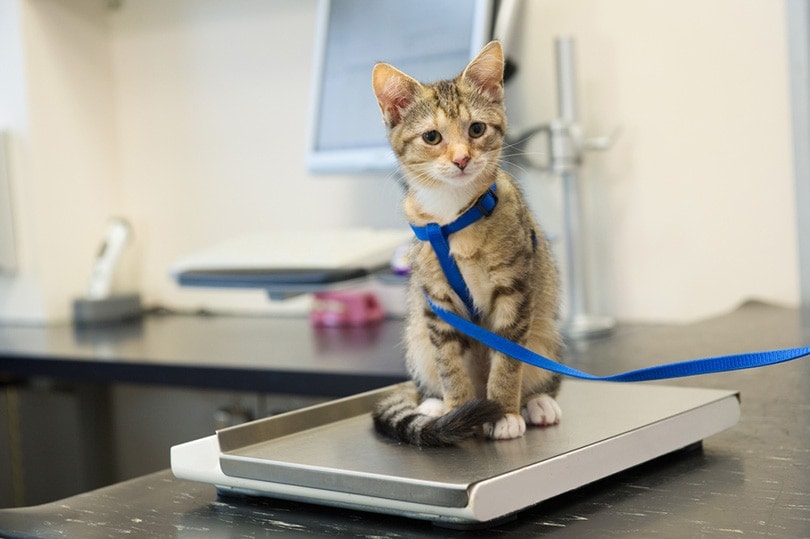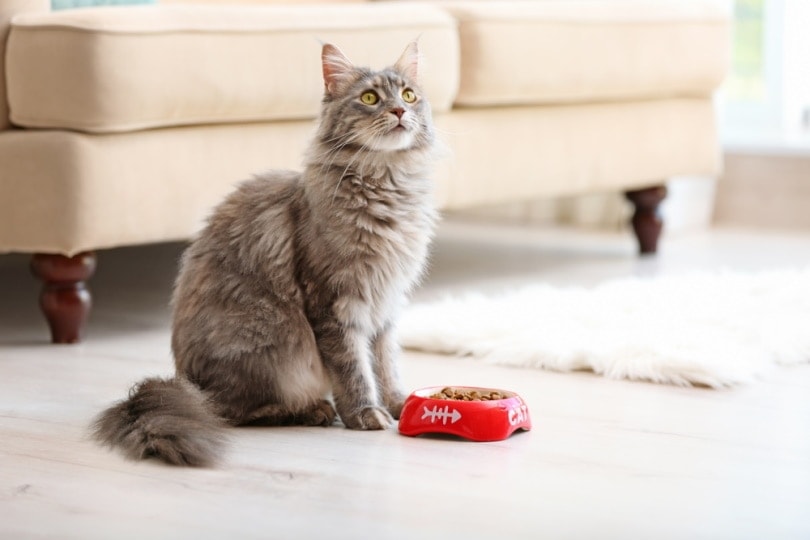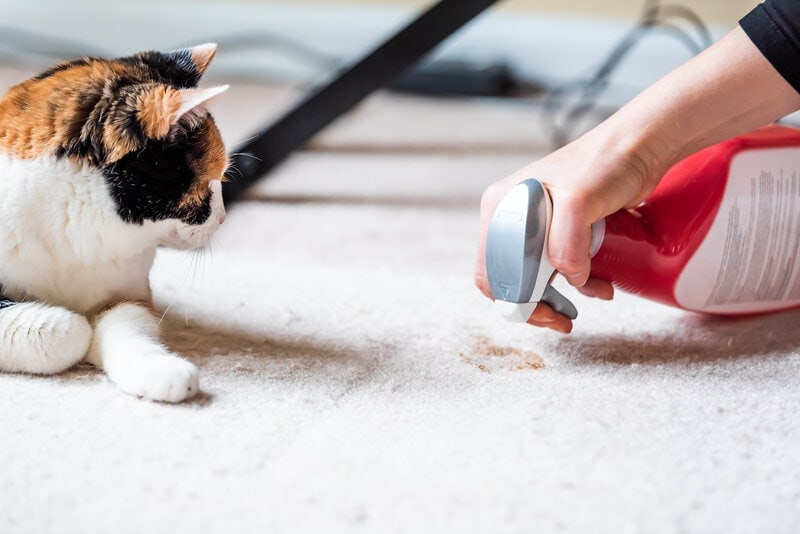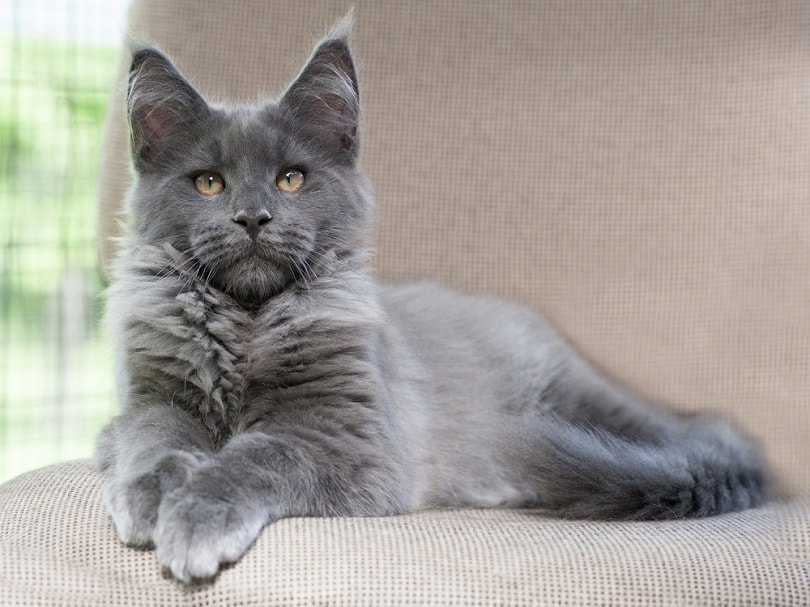Feeding Chart for Cats (by Weight)
| Weight (lbs) | Daily Calories | Cups of Food (oz) | Wet Food (oz) |
| 1 | 25 | 0.4 | 0.6 |
| 5 | 125 | 2 | 3 |
| 10 | 250 | 4 | 6 |
| 15 | 375 | 6 | 9 |
| 20 | 500 | 8 | 12 |

Wet vs Dry Food vs Both?
Many pet parents feed their cats wet food, and some provide a mix of dry and wet food. Wet food is denser calorically than dry food. If you’re feeding a combination of wet and dry food, it’s important to measure out the amounts so that your cat is getting the correct number of calories. 6 oz of wet food, or a little more than one can, averages about 250 calories. So, one can of cat food per day is enough for most cats daily if it’s supplemented with a little bit of dry food or treats. The trickiest part is that different foods will offer an additional number of kcals per oz. So, it’s essential to check the feeding instructions on the bag to get a feel for the caloric content of the specific food that you’re feeding your cat.
Body Type and Exercise Level
It’s also essential to assess your cat’s body type and exercise level. Some cats, like Maine Coons, are giant and can have a healthy body weight of up to 30 lbs. If your cat is of a huge breed, they’re going to need more food to sustain them. If your cat is very active and loves to play, it will need more food than a lazy cat and naps all day. If your cat tends to play by themselves often, consider increasing their food, especially if they’re usually hungry and begging for food.

What If My Cat Is Already Overweight?
If your cat is already overweight, it’s time to put them on a diet. Forewarning, they will hate it and likely will tell you all about how much they hate it. It will take your cat some time to get used to being on a diet. The transition period will probably require you to have a lot of patience since your cat will try everything in its power to get you to feed them. If you’re used to free-feeding your cat, you’ll have to stop doing that and start giving them set mealtimes, so they don’t overeat. While this may be more work for you overall, it will help your cat in the long run, and they’ll thank you for it.
How to Help Your Cat Lose Weight
Cats used to being free-fed don’t generally like the transition period between free feeding and meal-prepped-feeding. Your cat will complain and beg for food when their food bowl is empty, especially if they aren’t used to seeing it that way. One way you can get your cat to exercise more is to hide bowls of food around the house. In the wild, cats would work off the calories by hunting. Hiding small portions of food around the house can help your cat work off its calories by looking for hidden food. If hiding food every day sounds like a chore you don’t want to add to your repertoire, consider getting a feeding toy. These toys have small holes on them, and the cats must bat the toy and roll it around to get the food out from inside. These methods simulate hunting for your cat and allow them to work for their food much like their wild ancestors would have. If neither is doable for you, consider playing with your cat more! Chaser toys and laser pointers are a great way to get your cat moving. You can even get automatic laser pointer toys that you can set up to help your cat exercise even when you’re away. But just like people, most cats would prefer some quality playtime with their humans over a robotic toy.
Related Read: 8 Best Slow Feeder Cat Bowls: Reviews & Top Picks

Conclusion
How to properly feed our pets is a topic that every pet parent contends with at some point. It’s hard to say no to those cute little faces when they beg for food but making sure our pets are healthy needs always to come first. While occasional treating isn’t a bad thing, we don’t want to make a habit of letting our pets overeat. Some pets can control themselves and not eat themselves to death; others need us to intervene to keep them healthy. There’s no right or wrong way to feed your pets if they’re getting the proper nutrition. Even if you’re providing your cat “too much” by numbers, it isn’t a problem if they aren’t gaining excess weight. If you’re worried about your cat’s health or appetite, speak with your veterinarian. They can assess your cat’s needs and make sure that everything is okay under the hood. They’ll help you craft a perfect meal plant to keep your cat in tip-top shape!
Featured Image Credit: ANURAK PONGPATIMET, Shutterstock






